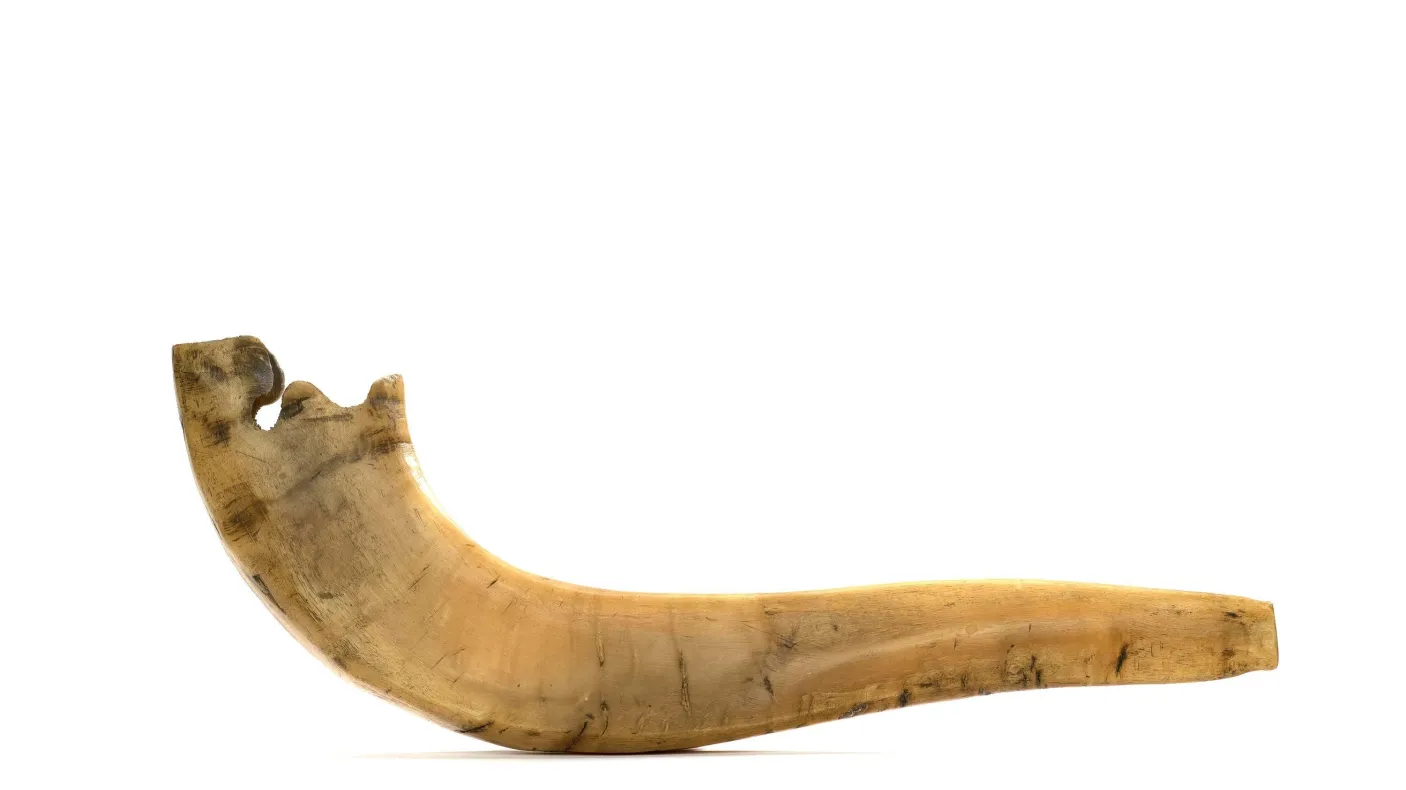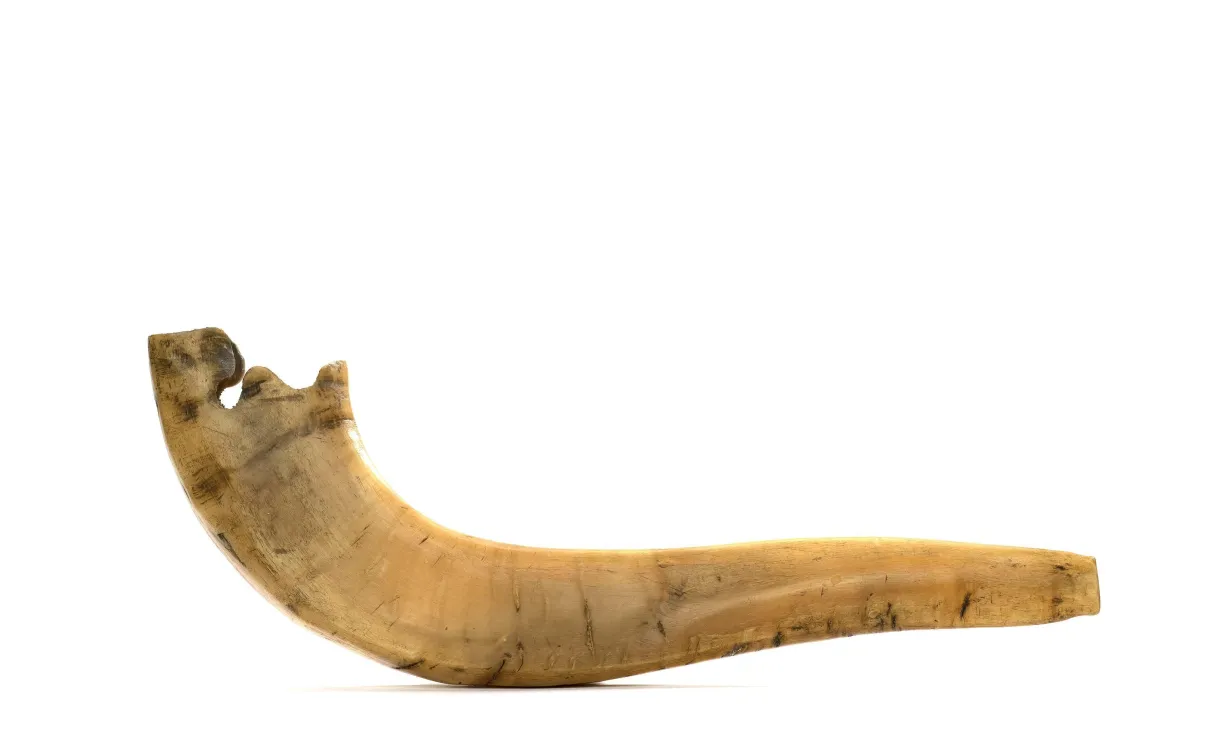A 19th-Century Shofar Sounds a Wake-Up Call
Published
Category
Author
At first glance, this shofar is unexceptional
As ROM Curator Emeritus K. Corey Keeble notes in Judaica: The Dr. Fred Weinberg and Joy Cherry Weinberg Collection at the Royal Ontario Museum, “It is plain, with no inscriptions.” Put simply, it’s just like shofars Jews have played during Rosh Hashanah (the Jewish New Year) and Yom Kippur (the Day of Atonement) around the world for centuries—a simple ram’s horn trumpet, the sounding of which, Keeble writes, symbolizes “the sparing of the life of Isaac” and the “ram as a substitute sacrifice.” But the shofar blast is also a call to repentance.
So, who heard the call?
Its exact provenance is uncertain, but Judaica traces this shofar to 19th-century Central Europe—a time and place of great turmoil for Jews. Beginning in 1881, “extensive anti-Jewish riots… swept the southern and western provinces of the Russian Empire … following the assassination of Tsar Alexander II.” Much of this violence—including rape and murder and looting—was done with “government and police encouragement.” Did this shofar survive those pogroms? The holocaust? And what will it survive next?
Here in Canada, it’s all too easy to think antisemitism is behind us. But antisemitism isn’t just hanging on—it’s rising. As The Canadian Press reported in April, “the number of violent [anti-Jewish] incidents rose by over 700 per cent from nine in 2020 to 75 in 2021.” Among them was an assault during which an employee at an Ontario liquor store was called a “dirty f—king Jew.”
From the depths of history, this shofar is calling, urging us to wake up.
Will we listen?


